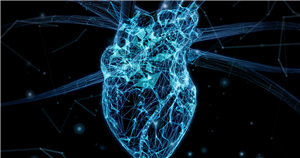NTT, Harvard announce digital twin partnership to engineer the heart

NTT Research announced that its Medical & Health Informatics Lab has entered a three-year joint research agreement with the Harvard John A. Paulson School of Engineering and Applied Sciences, focused on digital twins.
WHY IT MATTERS
Researchers are working to advance cardiac care through a cardiovascular bio digital twin model. They seek to explain the fundamental laws of the heart’s muscular pumps and other aspects of its function.
The MEI Lab has focused on multi-scale precision cardiology platforms and heart-on-a-chip technology. It is developing the infrastructure for a digital replica of an individual’s heart while SEAS’ Disease Biophysics Group has been working for nearly 20 years toward the goal of engineering a human heart.
DBG is an interdisciplinary team with experience building micro-physiological systems to approximate the physiology and pathophysiology of the human heart led by Dr. Kevin Kit Parker, a Harvard professor.
“His group’s long-term goal of engineering a living, functional heart maps well with our CV bio digital twin initiative,” said Dr. Joe Alexander, MEI Lab director. “Together, we hope to investigate and challenge tenets of cardiac physiology that may be based more on lore than experimental verification.”
MEI Lab has developed bioelectrodes as the interfaces with cells and tissues to accelerate the development of an in vitro CV bio digital twin and the DBG has found ways to use human stem cell-derived cardiac myocytes to understand how to build muscular pumps.
DBG also uses micro-physiological systems, or organs on chips, as an in vitro method of testing therapeutics in cells reprogrammed to an embryonic-like pluripotent state that recapitulates a disease of interest.
According to the announcement, the promise of the joint effort is revealing the structure-function relationships of the heart that may have been overlooked in the canon of CV physiology.
The directing investigator at NTT Research is Dr. Tetsuhiko Teshima, a research scientist at the MEI Lab and visiting researcher in the Neuroelectrical Group within the Munich School of BioEngineering at the Technical University of Munich.
Ryoma Ishii, who joined NTT Research in June and has been a visiting scientist at Harvard since 2019, will be collecting electrophysiological data of in vitro heart models, screening a suitable polymer for the surface of electrodes to measure the electrophysiology of the models and supporting the joint research project in other ways.
This collaboration with Harvard also expands upon NTT Research’s joint research with the university.
THE LARGER TREND
Remote patient monitoring and the growing number of medical devices being used in medicine are helping to fuel the development of continuous patient monitoring and digital twin technologies.
RPM devices offer large amounts of data that clinicians use to treat monitor and treat patients, but Gupreet Singh, PwC board member and global health client leader, says that health data can be leveraged to evolve healthcare from treating the sick to providing service to the well.
In a discussion with HIMSSTV on the journey of the consumer and digital twins, Singh described how replicating an individual’s genetic makeup with all its inputs and outputs and then running scenarios on it as “hyperbolic discounting.”
“It’s the decisions that you make today that may actually affect you in the future – that’s the value proposition. Now the key point, is how do you move the healthcare constituents and landscape from treating the sick to actually providing service to the well?”
ON THE RECORD
“There needs to be a strong relationship between people building models, like the MEI Lab, and the organs-on-chip people, like ourselves,” Parker said in the announcement.
“This joint research project will help ensure a productive interchange between experimental design, the parameter values that we generate and the development of the CV bio digital twin model,” he added.
Andrea Fox is senior editor of Healthcare IT News.
Email: [email protected]
Healthcare IT News is a HIMSS publication.
Source: Read Full Article